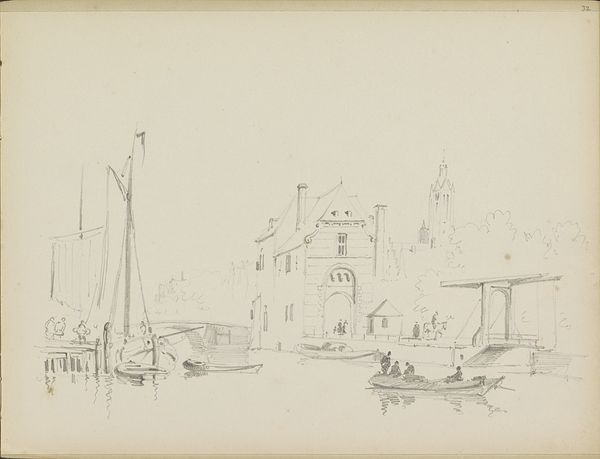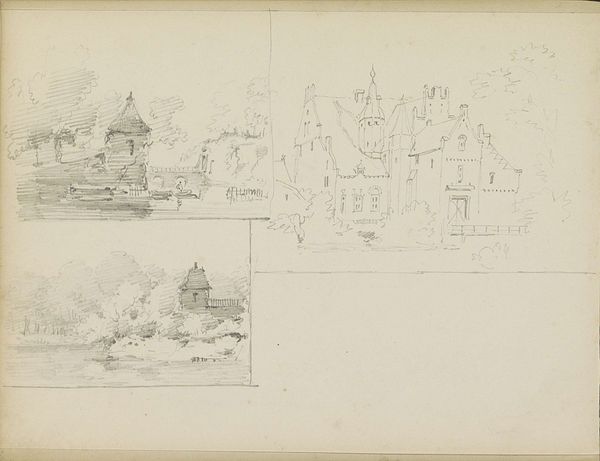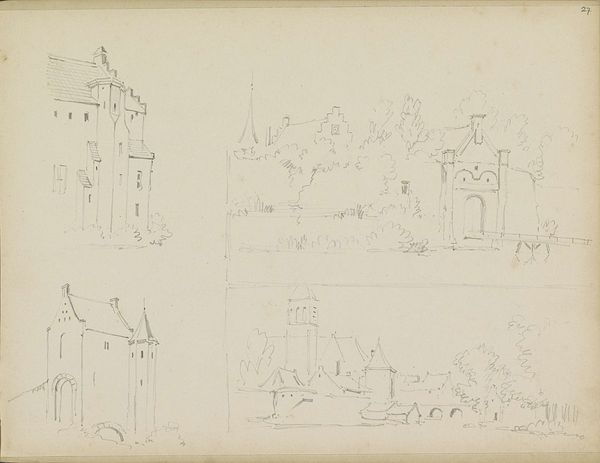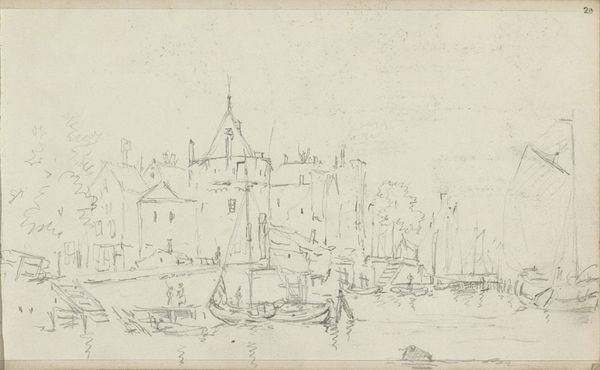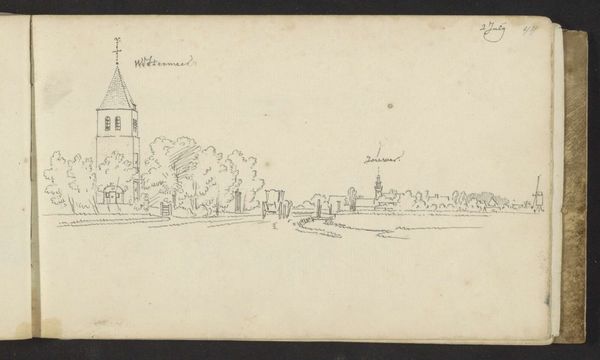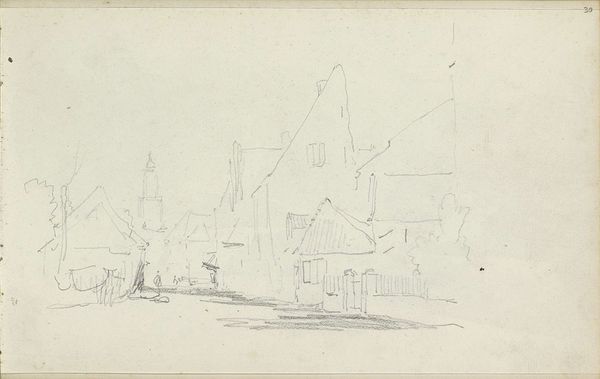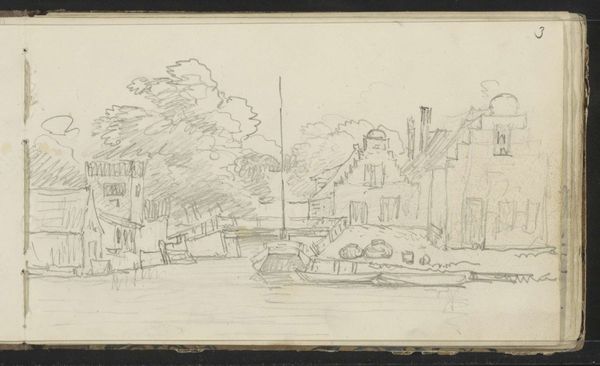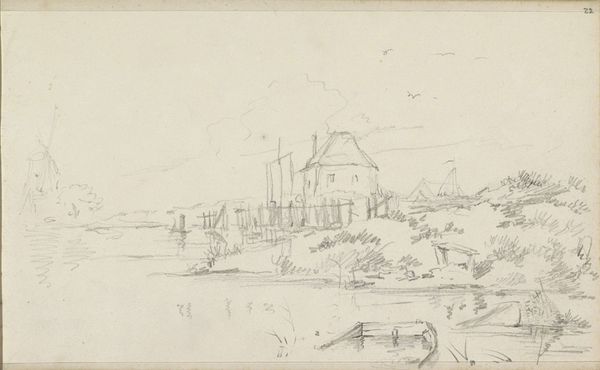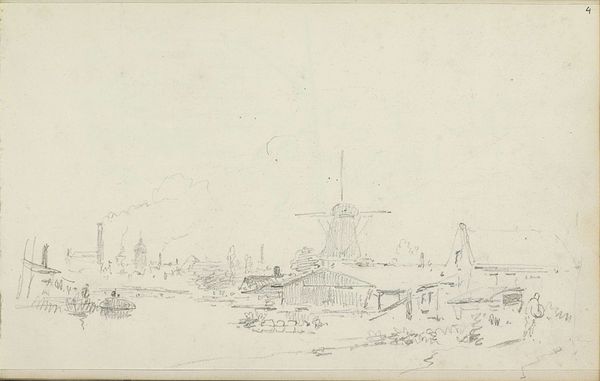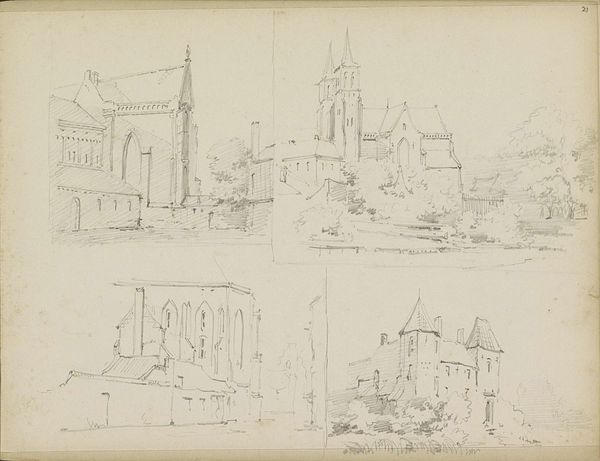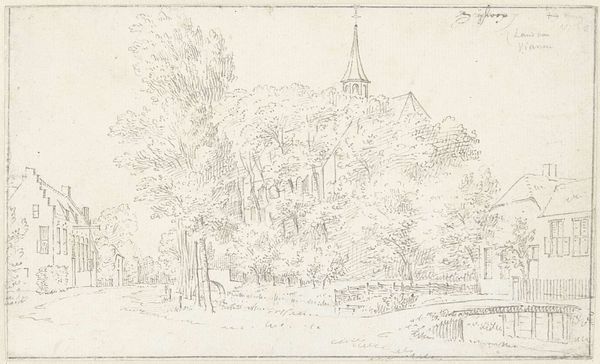
drawing, pencil
#
drawing
#
aged paper
#
sketch book
#
landscape
#
personal sketchbook
#
idea generation sketch
#
sketchwork
#
ink drawing experimentation
#
pen-ink sketch
#
pencil
#
sketchbook drawing
#
cityscape
#
storyboard and sketchbook work
#
sketchbook art
#
realism
Copyright: Rijks Museum: Open Domain
Curator: Adrianus Eversen created this pen and pencil drawing, titled "Twee gezichten op gebouwen aan een water," sometime between 1828 and 1897. What are your initial thoughts? Editor: It's ethereal. The soft pencil lines evoke a dreamlike state, like peering through a historical haze. The composition is bisected horizontally, creating a sense of duality. Curator: Yes, the dual compositions are intriguing. The upper scene shows buildings along a waterway, dominated by the masts of boats. The lower sketch seems to be another architectural structure, possibly a church spire rising amongst foliage. I would speculate that Eversen sought to explore form. His mark-making captures specific, repeated forms, exploring and arranging these until the artist arrives at some synthesis. Editor: Note the subtle cultural identifiers, though—the church as a stable, familiar symbol. Its presence signals continuity, but juxtaposed against fleeting, informal strokes. Does this placement suggest Eversen wanted to capture permanence and its gradual disappearance over time? Perhaps suggesting the temporary nature of all material creation? Curator: I observe his confident, even economical line work. Observe the use of negative space; The artist achieves much by implying shape, rather than detailing every line. This technique encourages active looking, the viewer almost unconsciously compelled to fill in the detail and complete the scene with our eyes. Editor: Right, those absences allow a layered reading. It brings forth memories tied to those structures, but they may differ across observers and experiences. Like, that distant spire could evoke a sense of serenity or solemnity based on personal connection with it as an icon. The sketch captures this intersection of collective symbols and individual experiences, reflecting the dynamic interplay between public image and private meaning. Curator: I agree, and note how Eversen creates implied perspective by varying the density of his marks. Look how some objects and buildings appear slightly out of focus due to the thinness of the line. I read that more as compositional technique that aids visual layering and spatial articulation. Editor: Perhaps. In either case, the very act of sketching carries its symbolism: A study. A record. But as an artist's preliminary study, he allows for new possibilities within familiar frameworks. Curator: So, both a glimpse into Eversen's artistic process and perhaps a mirror to our own? Editor: Precisely. We glimpse historical foundations while recognizing our continuous interpretations.
Comments
No comments
Be the first to comment and join the conversation on the ultimate creative platform.
